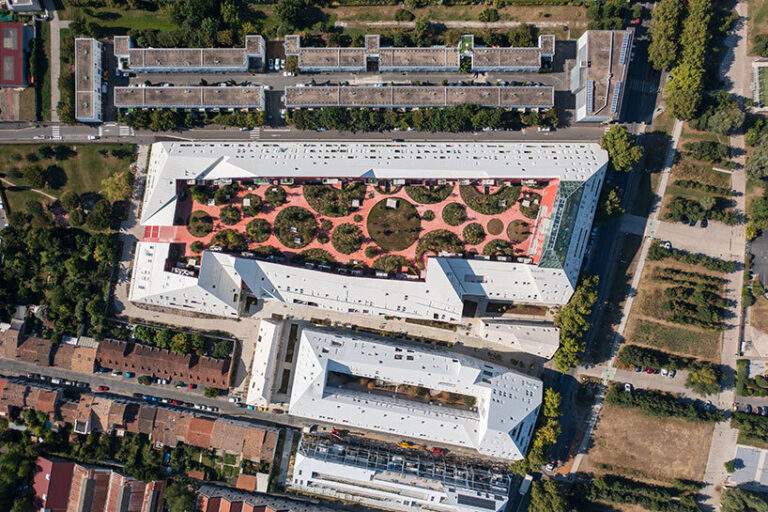Artificial intelligence (AI) is emerging as one of the most transformative forces reshaping the architecture profession. Through automation, algorithm-driven design, and enhanced collaboration tools, AI is redefining how buildings are designed, constructed, and managed. This transformation will not only impact workflows but also influence generations of architects differently – from seasoned professionals to young graduates entering the field. In this article, we’ll explore how AI is changing architecture, its generational impacts, and a forward-looking market analysis up to 2040.

1. How Is AI Changing the Architecture Profession?
AI is already redefining the role of architects in multiple ways:
- Automation: AI can handle repetitive tasks like initial drafting and structural analysis with speed and precision.
- Generative Design: It enables the creation of thousands of design options within minutes, helping architects identify optimal solutions.
- Cloud Collaboration: Digital platforms powered by AI allow geographically dispersed teams to collaborate seamlessly.
According to the World Economic Forum, approximately 30% of routine architectural tasks could be automated by 2030. This shift allows architects to focus more on creativity and client engagement rather than manual labor.
2. Generational Impacts: How Does AI Affect Different Age Groups?
A. The Older Generation (Baby Boomers and Gen X)
- Challenges: Senior architects face difficulties adapting to new technologies due to their reliance on traditional skills like manual drafting.
- Statistics: A survey by Archinect found that about 60% of architects over 55 are concerned about losing relevance for their manual expertise.
- Opportunities: Some have embraced tools like BIM (Building Information Modeling), but others may opt for early retirement rather than retraining.
B. Millennials
- Adaptation: Millennials, aged 30-45, are generally tech-savvy and comfortable with AI tools.
- Statistics: A study by the American Institute of Architects (AIA) revealed that 74% of millennial architects view AI as an enabler rather than a threat.
- New Economy: By 2030, freelancing or gig-based architecture work is expected to grow by 25%, driven by AI’s efficiency gains.
C. Generation Z
- Creativity Meets Technology: Gen Z, now entering the workforce, grew up with AI and virtual reality, making them natural adopters of advanced tools.
- Challenges: Increased automation means fewer entry-level roles, pushing young architects to develop skills in programming and data analytics to stay competitive.

3. What Will the Architecture Market Look Like by 2040?
A. Increased Automation in Design
By 2040, it’s projected that 40-50% of conceptual design work will be fully automated. Tools like Generative Adversarial Networks (GANs) will allow architects to generate and refine countless design iterations in seconds.
B. Evolving Architectural Roles
- Hybrid Roles: New positions will combine traditional design knowledge with computational expertise.
- Cloud-Based Work: An estimated 50% of architectural work will occur on cloud platforms, reducing the need for centralized office spaces.
C. Larger and More Complex Projects
The demand for megaprojects and smart cities will rise, with AI playing a key role in optimizing large-scale urban designs.
4. Preparing for These Transformations
A. Reforming Architectural Education
By 2035, 65% of architecture schools are expected to incorporate AI-specific courses into their curricula, according to the Association of Collegiate Schools of Architecture (ACSA). This shift will prepare students for a tech-driven future.
B. Focusing on Human Creativity
While AI excels at technical tasks, human creativity—rooted in cultural understanding and emotional intelligence—remains irreplaceable. A 2021 Harvard Graduate School of Design study emphasized that empathy and creative thinking will differentiate architects from AI-generated designs.

ArchUp Opinion: Analysis and Critique
Analysis:
AI offers immense potential to enhance efficiency and reduce costs in architecture. However, there is a risk of over-reliance on technology, particularly in areas requiring a human touch.
Critique:
Despite its benefits, AI could marginalize traditional skills and increase unemployment among junior architects. Professional bodies must ensure a balanced integration of technology while preserving the human element in architecture.
Frequently Asked Questions (FAQ)
1. Will AI replace architects?
No, but it will change the nature of their work, making technical skills increasingly important.
2. Which fields will require architects by 2040?
Demand will grow for specialties like computational design and data analytics.
3. How can older generations adapt to AI?
Through continuous learning and adopting appropriate digital tools.

Summary Table of Key Points
| Topic | Details |
|---|---|
| Impact of AI | 30% of routine tasks could be automated by 2030 |
| Older Generation | 60% fear losing relevance of traditional skills |
| Millennials | 74% see AI as a positive tool |
| Market by 2040 | 40-50% of conceptual design will be automated |
| Architectural Education | 65% of schools will include AI courses by 2035 |
If you found this article insightful, share it to help spread awareness about the future of architecture!





